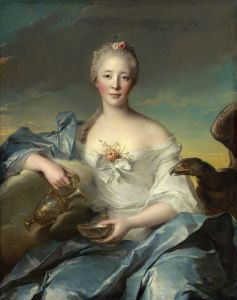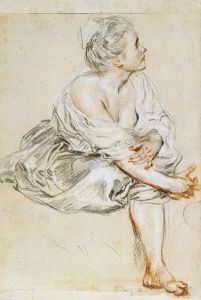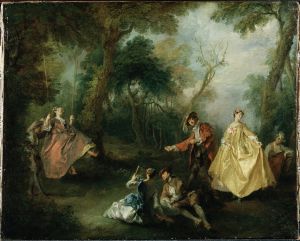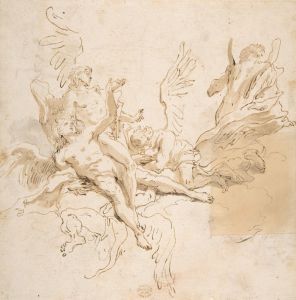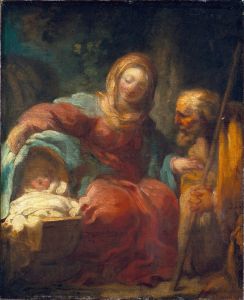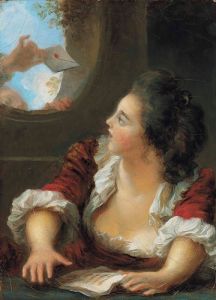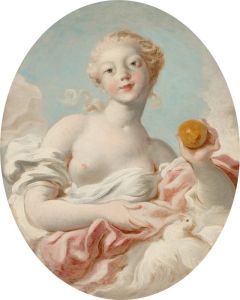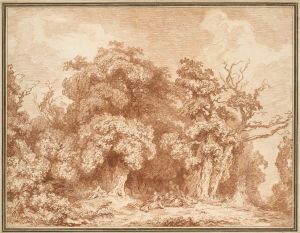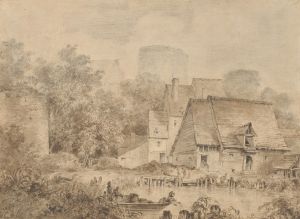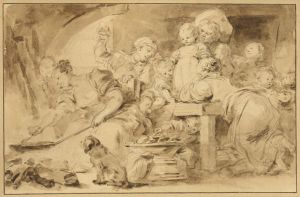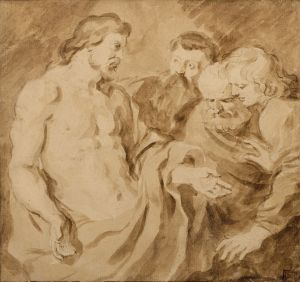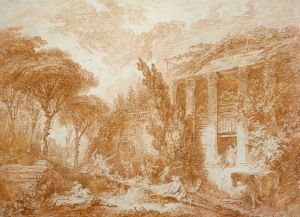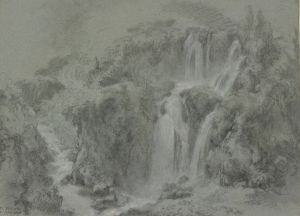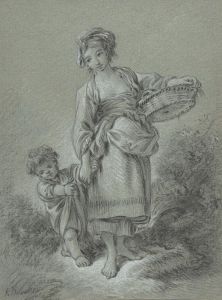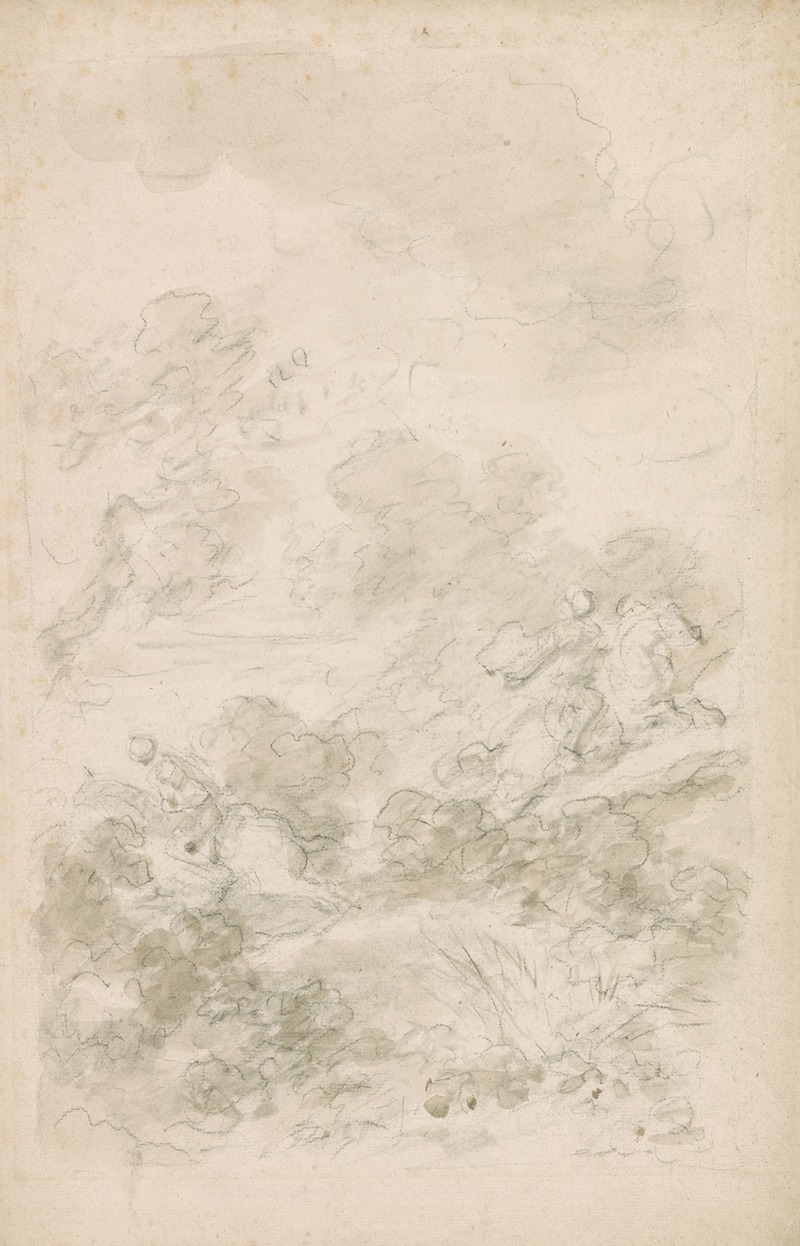
Ferrau and Orlando Chasing Sacripante
A hand-painted replica of Jean-Honoré Fragonard’s masterpiece Ferrau and Orlando Chasing Sacripante, meticulously crafted by professional artists to capture the true essence of the original. Each piece is created with museum-quality canvas and rare mineral pigments, carefully painted by experienced artists with delicate brushstrokes and rich, layered colors to perfectly recreate the texture of the original artwork. Unlike machine-printed reproductions, this hand-painted version brings the painting to life, infused with the artist’s emotions and skill in every stroke. Whether for personal collection or home decoration, it instantly elevates the artistic atmosphere of any space.
Jean-Honoré Fragonard, a prominent French Rococo painter, is known for his exuberant and playful style, often depicting scenes of romance and adventure. One of his works, "Ferrau and Orlando Chasing Sacripante," captures the dynamic and whimsical essence characteristic of his oeuvre. This painting draws inspiration from the epic poem "Orlando Furioso" by Ludovico Ariosto, a staple of Italian Renaissance literature that has inspired countless artists and writers since its publication in the early 16th century.
"Orlando Furioso" is a chivalric romance that intertwines various narratives of knights, love, and fantastical adventures. The story is set against the backdrop of a war between Charlemagne's Christian paladins and the Saracen army invading Europe. Among the numerous characters and subplots, the poem features the knight Orlando, who is driven to madness by his unrequited love for the beautiful Angelica. In the painting "Ferrau and Orlando Chasing Sacripante," Fragonard captures a moment from this intricate tale.
The scene depicted by Fragonard involves three key characters from Ariosto's epic: Ferrau, Orlando, and Sacripante. Ferrau is a fierce Saracen knight known for his strength and valor. Orlando, the protagonist of the poem, is one of Charlemagne's most celebrated paladins, renowned for his bravery and martial prowess. Sacripante, another Saracen knight, is also a suitor of Angelica, adding to the romantic and competitive tensions within the narrative.
Fragonard's painting likely portrays a moment of pursuit, a common motif in "Orlando Furioso," where characters are often depicted in motion, chasing or fleeing from one another. This dynamic action is emblematic of Fragonard's style, which frequently emphasizes movement and emotion through fluid brushwork and vibrant color palettes. The Rococo period, during which Fragonard flourished, favored such lively compositions, often imbued with a sense of light-heartedness and theatricality.
While specific details about the composition and style of "Ferrau and Orlando Chasing Sacripante" are not extensively documented, Fragonard's broader body of work provides insight into his artistic approach. His paintings are characterized by their playful elegance, intricate detailing, and the ability to convey complex narratives with a sense of immediacy and charm. Fragonard's ability to capture the essence of a story through his art is evident in his treatment of literary subjects, where he often focuses on the emotional and dramatic high points of the narrative.
Fragonard's works, including "Ferrau and Orlando Chasing Sacripante," reflect the cultural and artistic milieu of 18th-century France, a period marked by a fascination with romance, mythology, and the exploration of human emotions. His paintings continue to be celebrated for their technical skill and the joyful exuberance they bring to historical and literary themes.
In summary, "Ferrau and Orlando Chasing Sacripante" by Jean-Honoré Fragonard is a testament to the artist's ability to translate the dynamic and adventurous spirit of "Orlando Furioso" into a visual medium. Through his characteristic Rococo style, Fragonard captures the essence of the epic's narrative, bringing to life the timeless tales of chivalry and romance that have captivated audiences for centuries.





